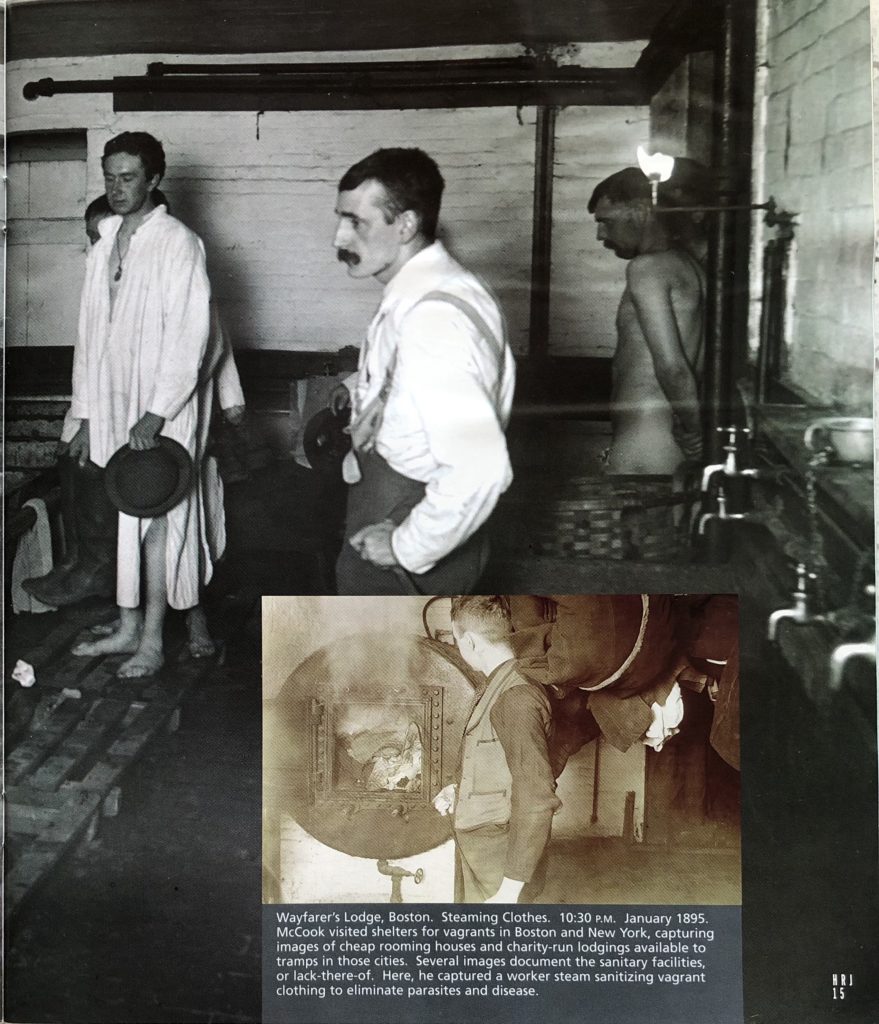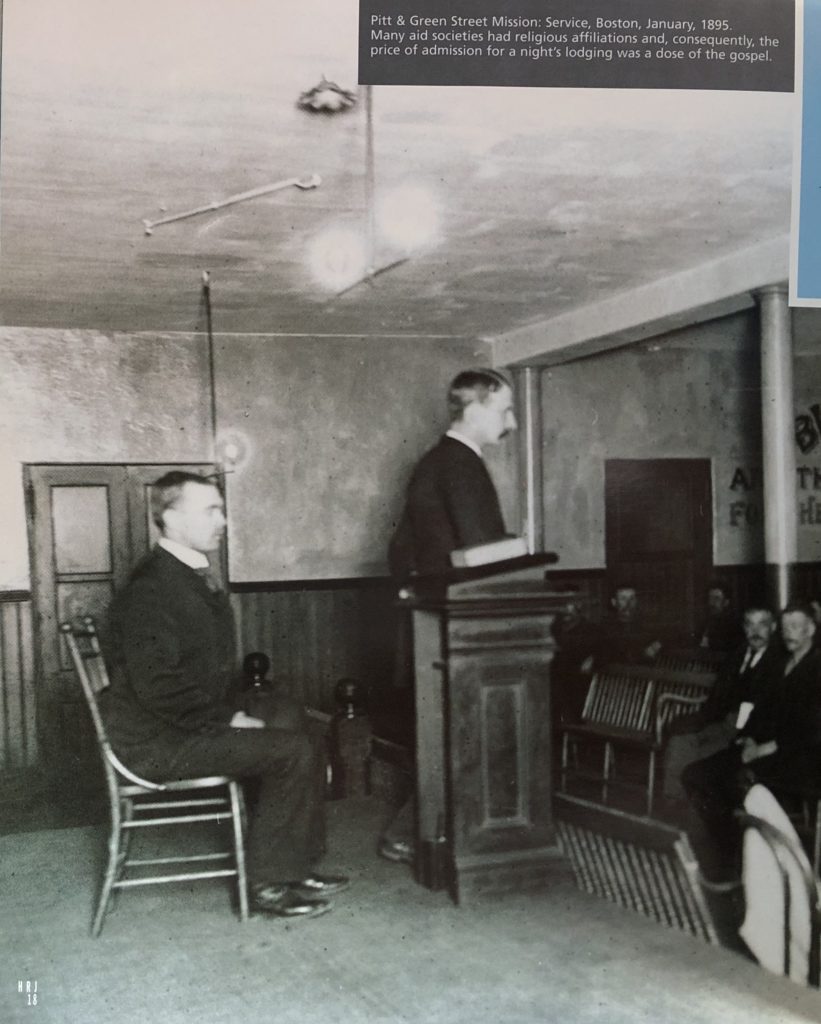
“Back porch, 114 Main Street, Hartford. May 18, 1895.” photo: John James McCook, Connecticut Landmarks
By Scott L. Wands
(c) Connecticut Explored Inc. Feb/Mar/Apr 2004
Subscribe/Buy the Issue!
Reverend John James McCook (1843 – 1927) once described himself as “1. Clergyman; 2. Teacher; 3. Investigator of so-called sociological phaenomena and writer concerning them; 4. Beggar General for Trinity College.” Today McCook is perhaps best known as a professor at Trinity College and long-time resident of Main Street, Hartford, where his home, the Butler-McCook House, is now a museum. During the 1890s and early 20th century, however, he gained fame in Hartford and beyond for his research of the city’s indigent population (then known as “tramps”), their health issues, and the proper way for society to address this public health problem.
This vocation began in 1890 when McCook discovered that Hartford’s proposed budget for “outdoor alms” (aid to be given to individuals or their families not residing in the municipal almshouse) was $40,000, double that of New Haven, a city whose population was more than on-and-a-half times Hartford’s. McCook not only successfully lobbied to limit alms expenditures to $25,000, he also chaired a committee that looked deeper into the matter. The committee’s recommendations to the city selectmen, which including eliminating allowances for such luxury purchases as “cocoanuts” and “eggs…often in winter,” were eagerly adopted. The exercise piqued McCook’s interest in the problem of homelessness in Hartford. In 1891, he conducted an extensive survey, eventually collecting data from 14 cities on tramps’ general health and history of venereal disease. With this largely anecdotal information, he attempted to draw connections between vagrancy, alcoholism, and overall health of the homeless population.
As part of his research, McCook explored the streets of Hartford and recorded the stories of the city’s homeless population. Between 1893 and 1895, this included the photographing of tramps to illustrate his lectures and articles. In addition to photographs taken “on the scene,” many by his son Philip, McCook often escorted or sent tramps to photographers’ studios to have their pictures taken. The men received payment for their time, often twenty-five cents apiece. In all, McCook created three series of photographs including individual and group portraits of indigent men, images from New York and Boston, and staged scenes of life in Hartford.
In 1893 McCook drafted a bill whose aim was to end the practice of jailing vagrants. The bill called for the establishment of a state reformatory for the rehabilitation of “tramps and drunkards.” Although the bill was approved by the state legislature in 1895, by the beginning of 1897 support for the reformatory had faded under objections from both neighbors of the proposed building site and legislators concerned about projected costs. The Reformatory Act of 1895 was repealed on April 8, 1897, and McCook’s reformatory was never built. McCook continued to collect and analyze statistics on tramps and to lecture and write extensively on the subject from 1890 to 1924.
All photos are from the collection of the Butler-McCook House & Garden, Connecticut Landmarks. Captions begin with McCook’s own notations as their appear on the original photographs.
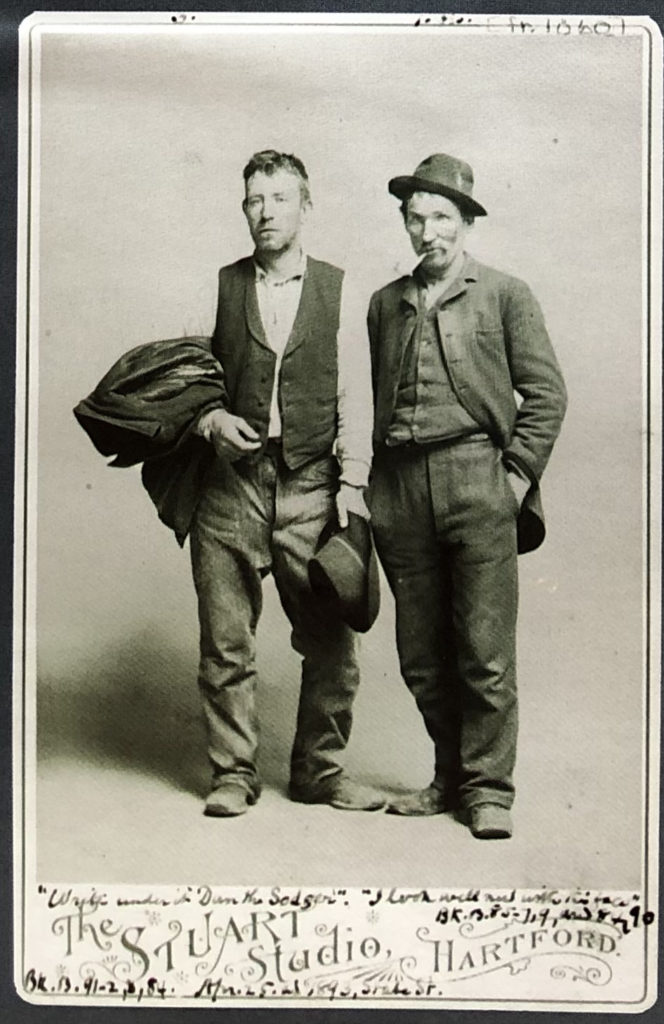
“Dan the Dodger (l) and other fellow.” April 25, 1893, State Street, Hartford. Connecticut Landmarks
“Dan the Dodger (left) and other fellow.” April 25, 1893, State Street, Hartford. On the reverse, McCook noted sightings of each man: “[Man, right] Seen first Apr. 25, fighting cut + bleeding on State St. Slept night before at Open Heath. Age 28.” “[Dan the Dodger, left]: Apr. 25 1893 State St. with 6 others of the same kind – partly drunk. Age 25.” McCook later added, “They are a little unsteady, but by bracing against one another get through and are paid.”
Wayfarer’s Lodge, Boston. The bath. 11 P.M. January 1895. While the tramps had their clothing sanitized, each received a hot bath in a very public setting, with several attendants on hand to aid in the disinfecting process.
[inset]Wayfarer’s Lodge, Boston. Steaming Clothes. 10:30 P.M. January 1895. McCook visited shelters for vagrants in Boston and New York, capturing images of cheap rooming houses and charity-run lodgings available to indigent men in those cities. Several images document the sanitary facilities, or lack-there-of. Here, he captured a worker steam sanitizing vagrant clothing to eliminate parasites and disease.
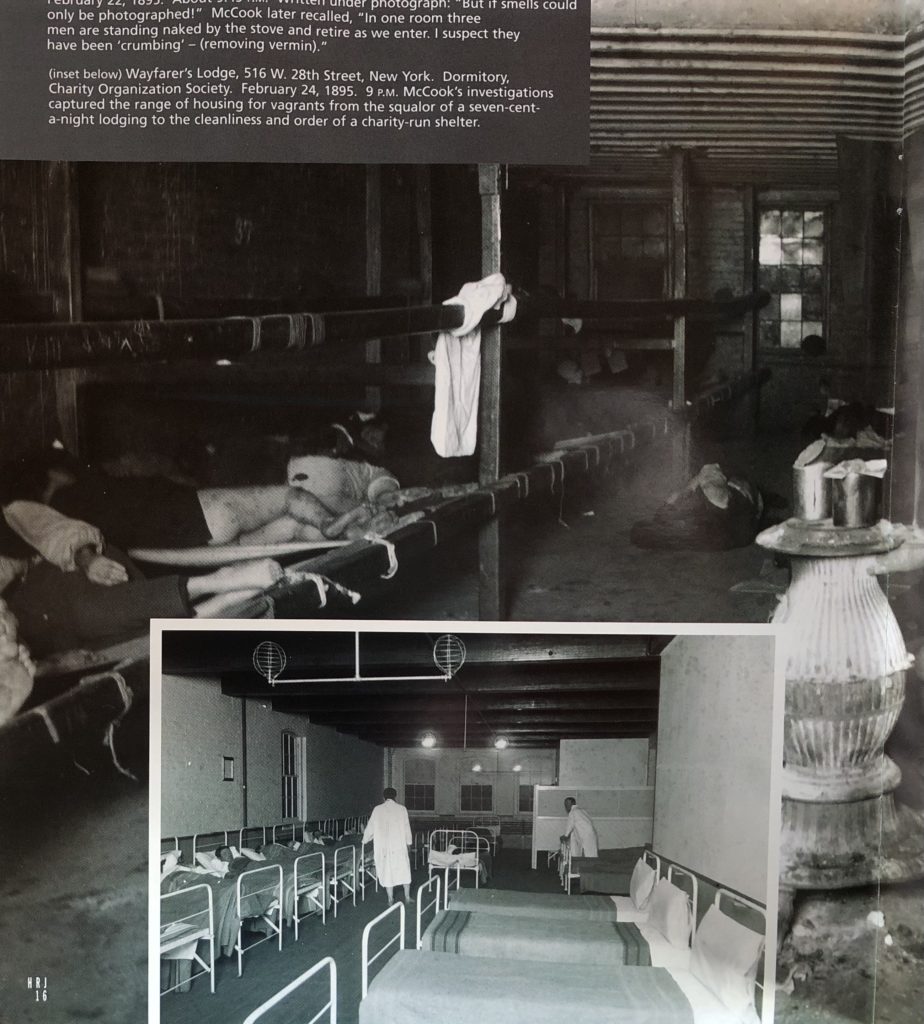
Seven-cent lodging house, third floor. Downtown, East side, New York. February 22, 1895. Connecticut Landmarks
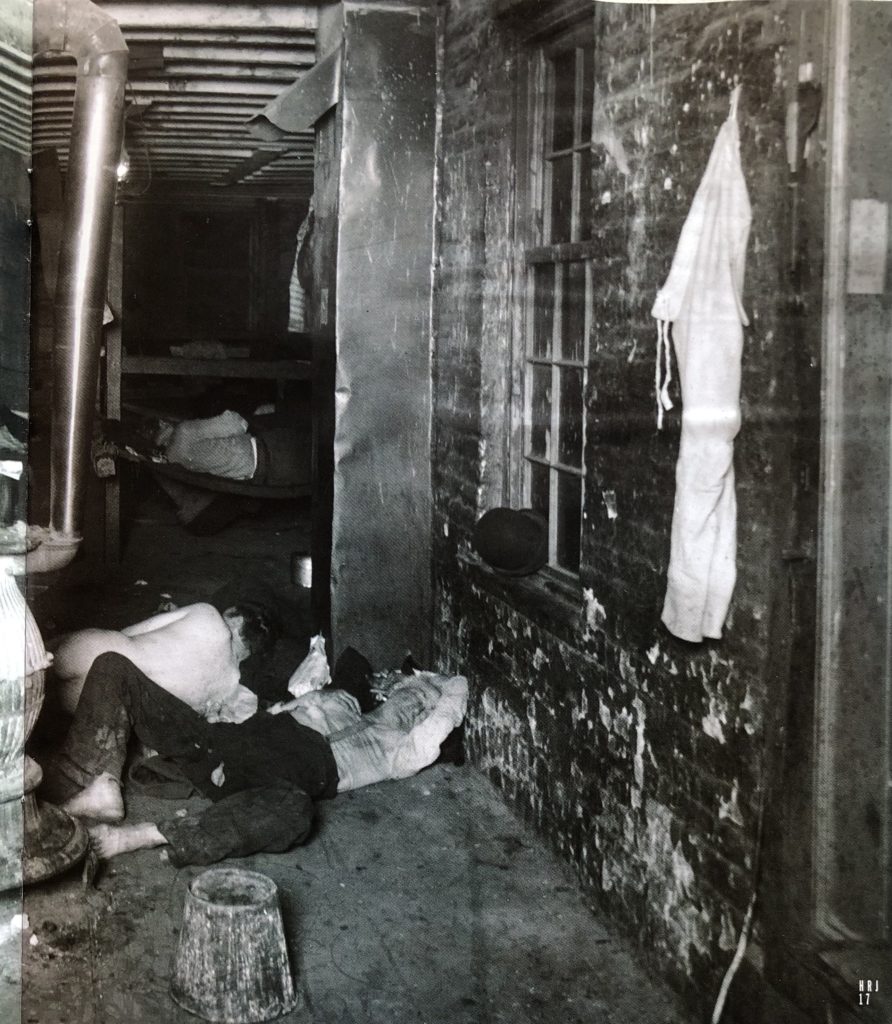
Seven-cent lodging house, third floor. Downtown, East side, New York. February 22, 1895. Connecticut Landmarks
Seven-cent lodging house, third floor. Downtown, East side, New York. February 22, 1895. About 9:45 P.M. Written under photograph: “But if smells could only be photographed!” McCook later recalled, “In one room there are men standing naked by the stove and retire as we enter. I suspect they have been ‘crumbing’ – removing vermin”
[top image, inset]Wayfarer’s Lodge, 516 W. 28th Street, New York. Dormitory, Charity Organization Society. February 24, 1895. 9 P.M. McCook’s investigations captured the range of housing for vagrants form the squalor of a seven-cent-a-night lodging to the cleanliness and order of a charity-run shelter.
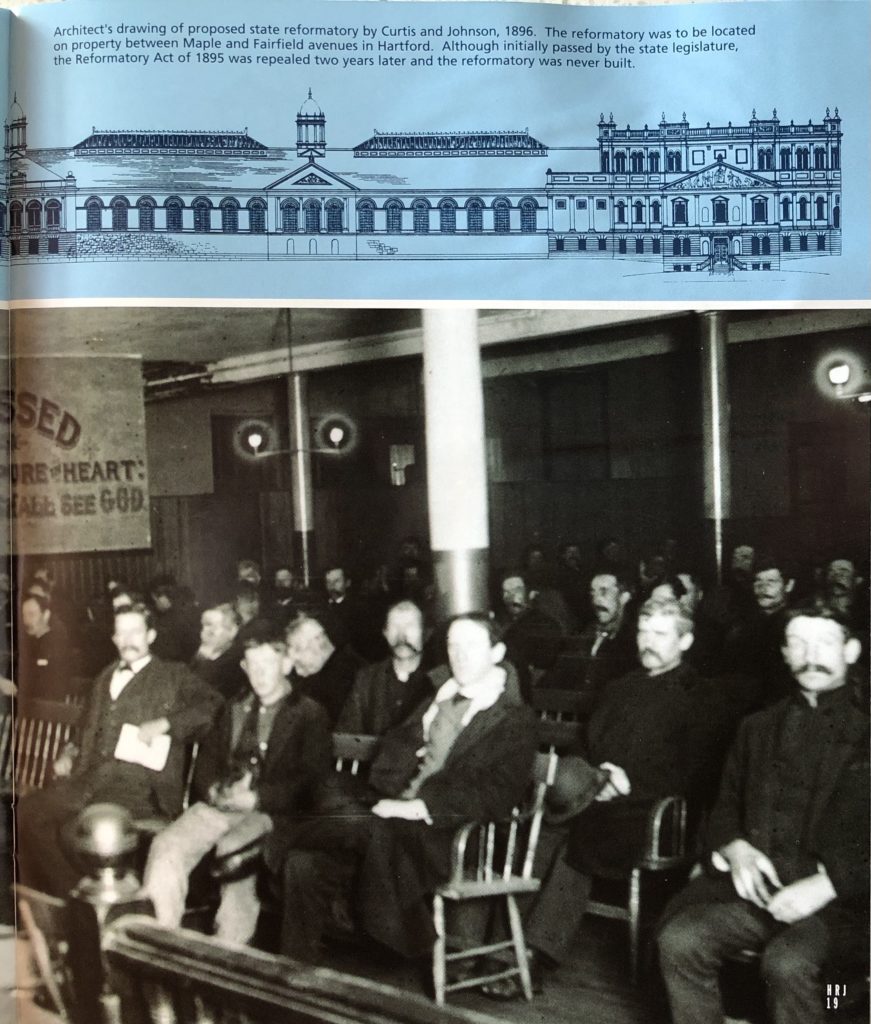
[inset above]Architect’s drawing of a proposed state reformatory by Curtis and Johnson, 1896. Connecticut Landmarks
Architect’s drawing of a proposed state reformatory by Curtis and Johnson, 1896. The reformatory was to be located on property between Maple and Fairfield avenues in Hartford.
Explore!
Read more stories about health history in the Feb/Mar/April 2004 and Spring 2007 issues.
Read more about “Rascals, Reprobates & Reformers” in the Winter 2008/2009 issue.
“Eliza McCook: A Missionary to China,” Summer 2013

